10 reasons why your face is Red
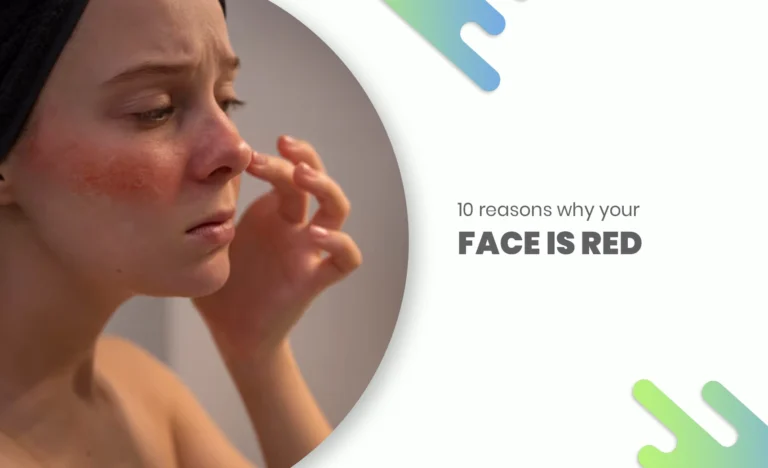
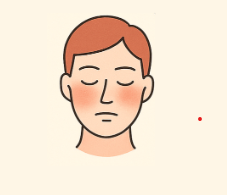
Facial redness is a common concern that affects people of all ages. Whether it appears as a temporary facial flushing trigger after exercise or spicy food, or as chronic facial redness due to underlying conditions, understanding why your face turns red suddenly is essential for both cosmetic and health reasons.
While occasional cheek redness triggers may be harmless, persistent or severe facial erythema causes can indicate inflammatory skin disorders, rosacea facial redness, or other facial skin conditions that may require medical attention. Knowing the potential red face reasons helps individuals take the right steps for facial skin health, including adopting a proper skincare routine, using gentle skincare products, or seeking a dermatology consultation.
Sun Exposure

One of the most common facial redness causes is sun exposure. Prolonged contact with UV rays can lead to sunburn facial skin, triggering skin inflammation face and facial erythema causes such as cheek redness triggers and facial capillary dilation. Even short-term exposure on sensitive skin can result in temporary red face reasons or face turning red suddenly.
Tips for Protection
- Apply broad-spectrum sunscreen daily to protect against UV-induced skin irritation and prevent photodermatitis face.
- Wear protective clothing and hats to reduce direct sun contact on the face.
- Limit sun exposure during peak hours to minimize facial blood vessel dilation and long-term facial skin conditions.
Maintaining good sun protection not only prevents red cheeks and nose causes but also supports facial skin health and reduces the risk of inflammatory skin disorders over time.
Rosacea
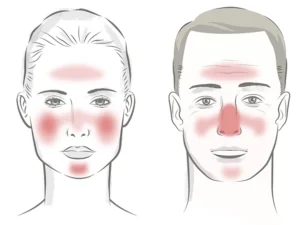
Rosacea is a common chronic facial redness condition that primarily affects the cheeks, nose, and forehead. It often presents with persistent facial flushing triggers, visible broken capillaries face, and episodes where the face turns red suddenly.
Symptoms and Triggers
- Persistent red face reasons including facial blood vessel dilation and facial erythema.
- Flare-ups can be triggered by heat exposure, red face, stress facial redness, alcohol facial flushing, or spicy food.
- Other signs may include sensitive skin, skin irritation, and occasional bumps or pustules.
Managing rosacea involves gentle skincare routine, avoiding known triggers, and getting a dermatology consultation for facial redness. Early intervention helps prevent worsening inflammatory skin disorders and supports long-term facial skin health.
Allergic Reactions
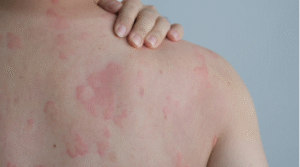
Allergic reactions are a frequent cause of red face reasons. Exposure to food, skincare, or environmental allergens can trigger the body’s histamine response, leading to facial flushing triggers, facial capillary dilation, and skin inflammation.
How Allergies Cause Facial Redness
- Histamine release increases blood flow to the face, causing sudden face turning red suddenly.
- Common triggers include contact dermatitis facial, eczema facial symptoms, or reactions to harsh skincare products.
- Individuals with sensitive skin face may notice cheek redness triggers even with mild exposure.
Recognizing an allergic reaction to a red face is crucial for preventing prolonged irritation. Avoiding known allergens, using gentle skincare products, and consulting a dermatologist can help manage facial skin health and reduce the risk of chronic facial redness.
Alcohol Consumption

Alcohol consumption is a well known trigger for facial redness. Drinking alcohol can lead to alcohol facial flushing by dilating blood vessels in the face, resulting in red face after drinking, especially in individuals with sensitive skin face or genetic predispositions.
How Alcohol Affects Facial Redness
- Facial blood vessel dilation caused by ethanol increases cheek redness and overall facial erythema.
- Repeated flushing episodes may contribute to chronic facial redness in some people.
- Certain alcoholic beverages, like red wine or spirits, may intensify facial flushing triggers due to histamine and congeners.
Moderation, staying hydrated, and identifying personal triggers can help minimize red face reasons related to alcohol. For persistent or severe flushing, a dermatology consultation is recommended to assess facial skin health and explore possible facial redness treatment.
Emotional Triggers

Emotional triggers such as embarrassment, anxiety, or stress can cause sudden facial flushing triggers and make the face turn red suddenly. This type of stress-related redness occurs because the nervous system signals facial blood vessel dilation, increasing blood flow to the cheeks, nose, and forehead.
How Emotions Affect Facial Redness
- Blushing is a natural response to emotional stimuli, often resulting in temporary cheek redness triggers.
- Stress or anxiety can exacerbate facial erythema causes and contribute to chronic facial redness if frequent.
- Individuals with sensitive skin face may notice more pronounced facial capillary dilation during emotional episodes.
Managing stress facial redness can involve relaxation techniques, mindful breathing, or consulting a professional if redness is persistent. Maintaining facial skin health through a gentle skincare routine redness may also reduce irritation and improve overall comfort.
Hormonal Changes

Hormonal changes during puberty, menopause, or other hormonal shifts are a common cause of red face causes. Fluctuations in hormones like estrogen and testosterone can trigger hormonal facial flushing by affecting facial blood vessel dilation and overall skin circulation.
How Hormones Influence Facial Redness
- Puberty can cause temporary cheek redness triggers as hormone levels rise.
- Menopause often leads to hot flashes and facial flushing triggers, resulting in the face turning red suddenly.
- Hormonal imbalances may also worsen existing chronic facial redness or sensitive skin face conditions.
Managing hormone-related facial erythema causes may involve lifestyle adjustments, stress management, and in some cases, medical consultation. Maintaining a gentle skincare routine redness helps protect facial skin health and reduces irritation during hormonal flushes.
Medications

Certain medications can trigger facial redness causes or drug-induced flushing. Common culprits include niacin, blood pressure medications, and some hormonal treatments, which can lead to medication side effects red face and facial blood vessel dilation.
How Medications Affect Facial Redness
- Drugs may cause cheek redness triggers, facial erythema causes, or your face turning red suddenly.
- Individuals with sensitive skin may experience more pronounced skin irritation.
- Chronic use of some medications can contribute to persistent red face reasons or exacerbate chronic facial redness.
It is crucial to consult a doctor before adjusting or discontinuing medications. Healthcare professionals can recommend alternatives or provide guidance on managing facial flushing triggers while maintaining facial skin health.
Skin Conditions and Irritants
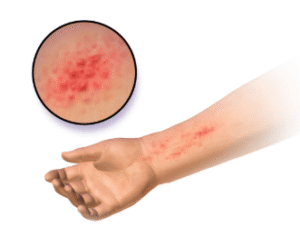
Skin conditions and irritants are common causes of facial redness. Issues like eczema, acne, or reactions to harsh skincare products can lead to skin irritation, eczema facial symptoms, and occasional acne flush, resulting in visible facial erythema.
How Irritation Contributes to Facial Redness
- Inflammatory skin disorders such as seborrheic dermatitis face can cause persistent red face reasons and cheek redness triggers.
- Harsh cleansers or exfoliants may worsen sensitive skin and lead to facial blood vessel dilation.
- Continuous irritation may contribute to chronic facial redness if left unmanaged.
Managing redness from skin irritation involves using gentle skincare products, avoiding known irritants, and consulting a dermatology consultation for proper facial redness treatment. Maintaining a soothing skincare routine redness supports facial skin health and prevents flare-ups.
Temperature Changes
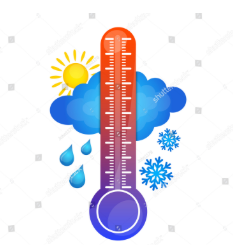
Temperature changes are a common trigger for facial redness causes. Exposure to hot weather, vigorous exercise, or consuming hot drinks can lead to temporary facial flushing triggers and heat flush, causing the face to turn red suddenly.
How Temperature Affects Facial Redness
- Exercise-induced flushing increases facial blood vessel dilation, resulting in red face after exercise or temporary cheek redness triggers.
- Hot environments or spicy foods may worsen facial erythema causes, particularly in individuals with sensitive skin.
- Repeated exposure can contribute to persistent red face reasons in susceptible individuals.
Managing temperature-related redness includes staying hydrated, avoiding extreme heat, and using gentle skincare products to protect facial skin health. Recognizing these triggers helps differentiate between normal facial flushing and chronic facial redness that may require dermatology consultation.
Medical Conditions
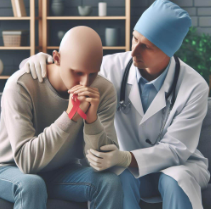
While many cases of facial redness causes are harmless, certain medical conditions can lead to more serious red face reasons. Conditions like lupus butterfly rash, high blood pressure, cellulitis, face swelling, or infections may result in facial flushing medical conditions and persistent chronic facial redness.
When to Seek Medical Attention
- Sudden or severe face turning red suddenly accompanied by pain, swelling, or other symptoms requires prompt evaluation.
- Persistent redness, especially involving cheeks and nose, may indicate facial redness medical causes that need professional diagnosis.
- Consulting a dermatology consultation or healthcare provider ensures proper assessment and appropriate facial redness treatment.
Early recognition of red face health concern helps prevent complications and supports long-term facial skin health, particularly in cases related to inflammatory skin disorders or systemic diseases.
Conclusion
Facial redness can result from a variety of factors, ranging from common triggers like sun exposure, alcohol, spicy food, and emotional stress to medical conditions such as rosacea, eczema, or lupus butterfly rash. Understanding these facial redness causes helps distinguish between temporary face turning red suddenly and persistent red face reasons that may require medical attention.
Key Takeaways
- Identify triggers: Recognizing your personal facial flushing triggers—including hormonal changes, medications, and environmental factors—is essential for managing redness.
- Seek treatment when needed: Consulting a dermatology consultation or healthcare provider ensures proper facial redness treatment and supports long-term facial skin health.
- Skincare matters: Using gentle skincare products and following a proper skincare routine redness can reduce irritation and improve overall skin inflammation face.
FAQs
1. Why does my face turn red suddenly?
Sudden facial flushing can be triggered by emotional stress, exercise, alcohol, or heat exposure. In some cases, it may indicate underlying medical conditions like rosacea or allergic reactions.
2. Can rosacea cause permanent facial redness?
Yes. Rosacea facial redness often becomes chronic over time due to facial blood vessel dilation and inflammatory skin disorders. Early treatment helps reduce long-term redness and flare-ups.
3. What medical conditions cause facial redness?
Certain conditions such as lupus butterfly rash, seborrheic dermatitis, eczema, and cellulitis can lead to persistent facial erythema causes. If redness is accompanied by swelling, pain, or other symptoms, consult a doctor.
4. How can I reduce facial redness naturally?
To minimize redness, use gentle skincare products, avoid spicy food face redness triggers, stay hydrated, and protect your skin from sunburn facial skin damage. For persistent red face reasons, seek a dermatology consultation.
5. When should I see a dermatologist about facial redness?
You should seek medical advice if your facial redness is persistent, painful, or spreading, or if it’s linked to other symptoms like skin irritation face, swelling, or facial flushing medical conditions.
References:
- Wilkin, J., Dahl, M., Detmar, M., Drake, L., Feinstein, A., Odom, R., & Powell, F. (2002). Standard classification of rosacea: Report of the National Rosacea Society Expert Committee on the Classification and Staging of Rosacea. Journal of the American Academy of Dermatology, 46(4), 584–587. https://doi.org/10.1067/mjd.2002.120625
Crawford, G. H., Pelle, M. T., & James, W. D. (2004). Rosacea: I. Etiology, pathogenesis, and subtype classification. Journal of the American Academy of Dermatology, 51(3), 327–341. https://doi.org/10.1016/j.jaad.2004.03.030


